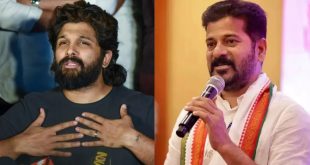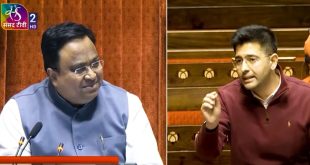[ad_1]

After 75 years of independence, now the honorable people of India will sit in the new Parliament House and make the law. The new parliament building built at a cost of 862 crores is ready. Prime Minister Narendra Modi will inaugurate this Parliament building on May 28. The new Parliament building, built in a triangular shape, has four floors.
Along with Rajya Sabha and Lok Sabha, the new Parliament House will also have a Constitution Hall. In which the constitutional heritage of the country will be displayed. According to the information, the new building has a seating capacity of 888 Lok Sabha MPs. Even in the new building, the Rajya Sabha is smaller in size than the Lok Sabha. 384 MPs can sit in the Rajya Sabha. A total of 1280 MPs can sit together in a joint sitting of both houses. The new Parliament building has been made earthquake resistant and its floor color is grey-green.
There are currently 545 Lok Sabha seats in India, out of which 543 seats are up for election. The seating capacity of Lok Sabha MPs in the old Parliament House was 590. In such a situation, many questions have started to arise on the manner in which the capacity of seats has been increased in the new Parliament House. For example, will there be a new limit to determine the number of Lok Sabha seats in India? Will there be elections for more than 543 Lok Sabha seats in the near future? Will the government increase the number of seats in both houses?

What is the present system of Parliament?
There are a total of 545 Lok Sabha seats in India, out of which 543 seats are up for election. In 1976, the number of seats was fixed at 545. The Rajya Sabha consists of 250 seats, of which 12 are nominated by the President and the remaining seats are elected by legislators. The present Parliament House in India was built in 1927 during the British Raj. The Lok Sabha of the old Parliament House could seat 590 members, while the Rajya Sabha had less than 300 members. Many opposition parties have targeted the central government over the construction of a new parliament building.
How are Lok Sabha seats decided in India?
Lok Sabha seats are important for forming the government at the centre. Government can be formed only on the basis of majority in Lok Sabha. According to the principle of proportional representation, the number of seats in the Lok Sabha is fixed constitutionally.
Article-81 of the Constitution of India defines the composition of the Lok Sabha. Accordingly, the number of Lok Sabha seats can be decided on the basis of population. For this the Election Commission has to delimit.
Delimitation literally means – the process of determining the boundaries of constituencies with legislative bodies in a country or province.
According to the Delimitation Act 2002, delimitation can be presided over by a sitting or former judge of the Supreme Court. The Chief Election Commissioner or the Election Commissioner nominated on his behalf are also its members.
The Delimitation Commission will report after a detailed study on two aspects- How many seats will there be in the Lok Sabha? What will be the number of state wise seats?
According to Article 82, allocation of seats can be considered every 10 years when census data is available. In India, in 1976, the number of Lok Sabha seats was determined based on population.
Why is there a demand to increase seats in Lok Sabha?
The biggest reason for this is population growth. India’s population was 500 million when Lok Sabha delimitation took place in 1976. That is, the formula of one seat in 10 lakh was fixed at that time. India’s current population is about 142 crore, which is almost three times more than in 1976. There has been no increase in the number of seats compared to the population. If we look at the statistics, now there is one MP per 17 lakh people. That is, if reversed, an MP has to maintain public relations among 17 lakh people to win. This is also a difficult task. In 2019, former President of India Pranab Mukherjee demanded 1000 seats in the Lok Sabha.

Arguing in favor of this, Pranab Mukherjee raised the question that ultimately how many people can an MP represent? He said that if you look at the elected representatives in India, the number of voters is very high in proportion to them. A delimitation exercise was carried out in 2002 to increase the number of Lok Sabha seats in India, but was postponed after political protests at the time. Not only that, the delimitation was put on hold till 2026 by a resolution.
How many seats should there be in Lok Sabha?
After 2019, this question is in the headlines. Congress MP Manish Tiwari tweeted in 2021 after Pranab Mukherjee’s statement. Tiwari wrote that he has learned from BJP leaders that the government is considering increasing the number of Lok Sabha seats to 1000. That is, a large section is feeling that if there is delimitation in the country, a formula like 1976 (one seat per 10 lakhs) can be applied. A report was released in the year 2019. The report cited the Macmillan theory and said that the total number of Lok Sabha seats according to Russia should be 848 if the number of seats in a state is not to be reduced. However, the final authority to decide the number of seats rests with the Delimitation Commission. The report of the Delimitation Commission has to be passed in both the Houses of Parliament.
 Suspense Crime Sach Ka Dam
Suspense Crime Sach Ka Dam


